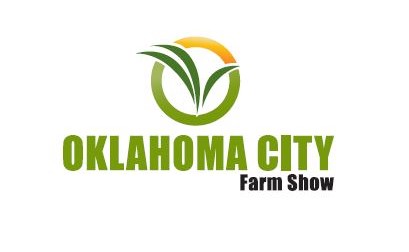
Oklahoma’s wheat crop has experienced a challenging season, marked by initial drought stress and difficulties in fall planting, according to Dr. Amanda Silva, Oklahoma State University (OSU) small grains extension specialist. Speaking at the Chickasha Wheat forage and field day with our own Maci Carter, Dr. Silva provided an insightful overview of the current state of the crop and offered guidance for producers.
Reflecting on the early conditions, Dr. Silva noted, “Our crop was really stressed before we got all this rain. The crop is a little bit short. When you look at it from outside, it looks nice, but then when you get close, you’ll see it’s a little bit thinner than we would like it to be.”
However, she remained optimistic given the circumstances, stating, “Considering all that, I think it looks good. And with the moisture that we are getting now, I’m more hopeful that we can get a good crop this year. It’s not going to be a bumper crop, but I think it will really help us.”

The recent rainfall has been a significant boost for the crop’s potential. “At the point that we were at before, it was downhill from there. So right now, it is the moisture we need to start setting up those grains in the head, and it’s going to be crucial for filling the grain,” Dr. Silva emphasized.
Beyond the lack of moisture, Dr. Silva highlighted difficulties during the fall planting season. “We had a lot of challenges in the fall. A lot of us planted before the rain, and many into inches of that really crusted soil, and that gave us spotty stands.” Others waited to plant until after the significant rainfall event of early November, which led to delayed emergence in many areas, causing the crop to be “just behind in growth.” Dr. Silva pointed out the variability across the state, with some producers having to “spot plant” to address establishment issues.
Regarding current management practices, Dr. Silva indicated that options are limited at this stage. “Management-wise, I don’t think there is anything else we can do. Most of the wheat in the state is around heading – this is the flowering stage, so there’s not much we can do.”
While there are concerns about potential disease development, particularly rust, Dr. Silva advised caution regarding fungicide applications, especially in crops with uncertain yield potential. “Right now, all the decisions have been made; all the management practices have been made, so it’s just hoping that we get moisture when we need it to fill the grain so that we can finish up the crop.”
Comparing this year to the last, Dr. Silva noted the contrasting challenges. “Last year, I think we were dealing with drought at some point. We had a lot of issues with stripe rust and leaf rust that were more clear. This year, as of now, we are not seeing any issues with disease. The biggest issue was just getting the plant established, to get it going in the spring. A lot of things that we are seeing this year are issues with incorporating herbicides. So, a lot of weeds that are difficult to control.”
She concluded, “Every year here in Oklahoma is a learning opportunity for us to help our farmers. Looking at this year, I think we already did what we could, so we just hope for more rain.”
Dr. Silva also shared findings from ongoing nitrogen application timing research. “What we are seeing is farmers, if they’re going for grain-only production, they do not need to apply all that nitrogen in the fall. They can wait to top dress in the spring, and that would help them reduce the rate of nitrogen that is applied. It’s a much more efficient way of providing that nitrogen to the crop. So applying in the spring is more efficient than fall nitrogen application.”

Looking ahead, Dr. Silva highlighted the focus on management practices for late-planted wheat. “Here in Oklahoma, almost every year, we are pushed to delay planting for some reason, so we have to understand better if we need to change our recommendations, like for fertility, for seeding rate when we delay planting, and even for variety adaptation.”
Producers seeking more information or wishing to contact Dr. Silva can find her on Facebook at OSU Small Grains or visit the website at wheat.okstate.edu. Additionally, the OSU wheat team has launched a new group text messaging service for updates and direct communication. Interested individuals can text the provided phone number to enroll and anonymously share observations or ask questions. “It’s a great way to communicate with our farmers, and I hope people enroll and get in touch with us,” Dr. Silva encouraged.


















